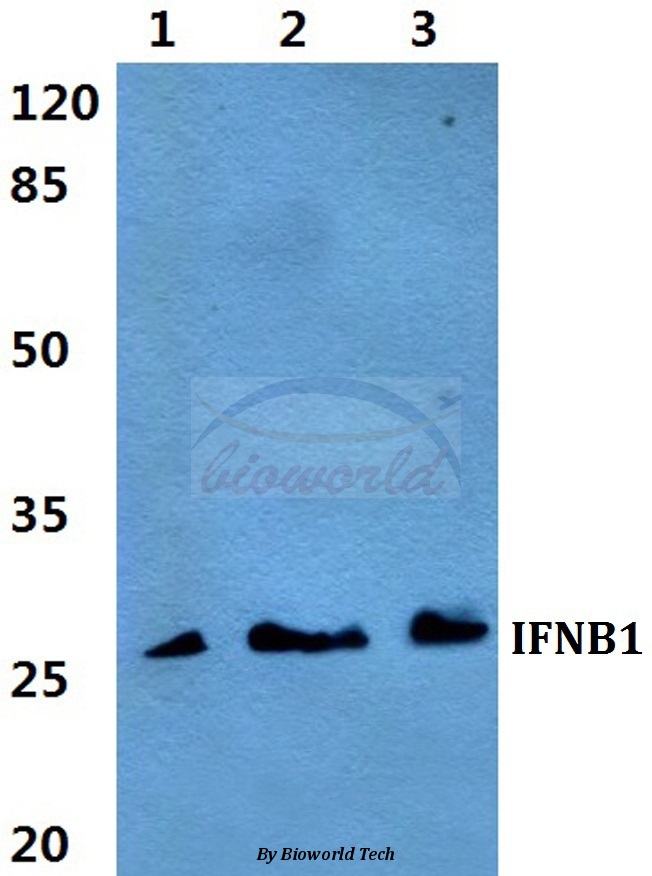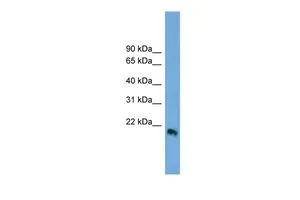Interferon beta antibody
GTX10740
ApplicationsWestern Blot, Neutralisation/Blocking
Product group Antibodies
ReactivityHuman
TargetIFNB1
Overview
- SupplierGeneTex
- Product NameInterferon beta antibody
- Delivery Days Customer9
- Application Supplier NoteWB: 0.1-2.0 microg/ml. *Optimal dilutions/concentrations should be determined by the researcher.Not tested in other applications.
- ApplicationsWestern Blot, Neutralisation/Blocking
- CertificationResearch Use Only
- ClonalityPolyclonal
- ConjugateUnconjugated
- Gene ID3456
- Target nameIFNB1
- Target descriptioninterferon beta 1
- Target synonymsIFB, IFF, IFN-beta, IFNB, interferon beta, fibroblast interferon, interferon, beta 1, fibroblast, interferon-beta
- HostGoat
- IsotypeIgG
- Protein IDP01574
- Protein NameInterferon beta
- Scientific DescriptionThe mammalian type I IFNs1 are produced in response to viral infection and other inducers. They are divided into alpha and beta subtypes leukocytes and fibroblasts reactivity. The human IFN alphas are encoded by a family of at least 15 different genes, while IFN beta is the unique member of its subtype. There is approximately 50% amino acid homology between the alpha and beta subtypes. Both IFN subtypes are pleiotropic cytokines and have a similar range of biological activities. Differences between alpha subtypes, and between IFN alpha and betas, are in potency and cell type specific activities. In particular, IFN beta elicits a markedly higher antiproliferation response in some cell types such as, embryonal carcinoma, melanoma and melanocytes than do IFN alphas. Higher potency of IFN beta in treatment of multiple sclerosis and certain cancers has been observed. Type I IFNs signal through binding to a common cell surface receptor. Two chains of the receptor, IFNAR1 and IFNAR2, have been identified. Both chains are necessary for function and in the absence of either there is neither high affinity binding nor biological activity. The intracellular portions of the receptor subunits are bound by tyrosine kinases, Jak1 and Tyk2, members of the Janus kinase family. Upon ligand binding these kinases are activated and phosphorylate members of the STAT family of transcription factors, as well as IFNAR1 and 2.
- ReactivityHuman
- Storage Instruction-20°C or -80°C,2°C to 8°C
- UNSPSC12352203






